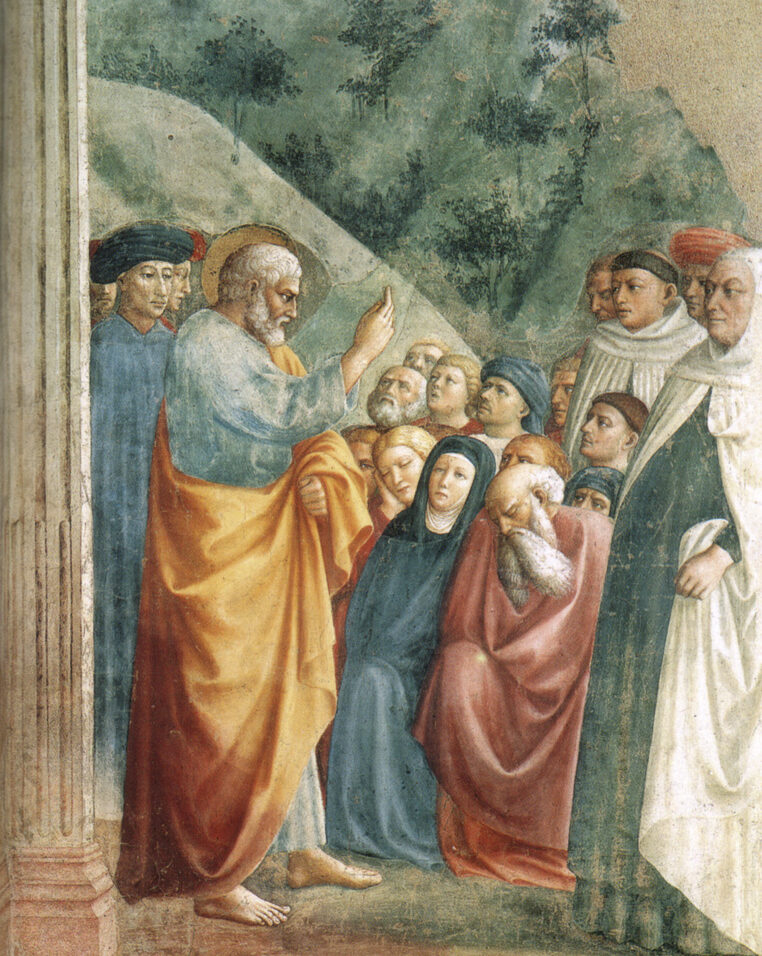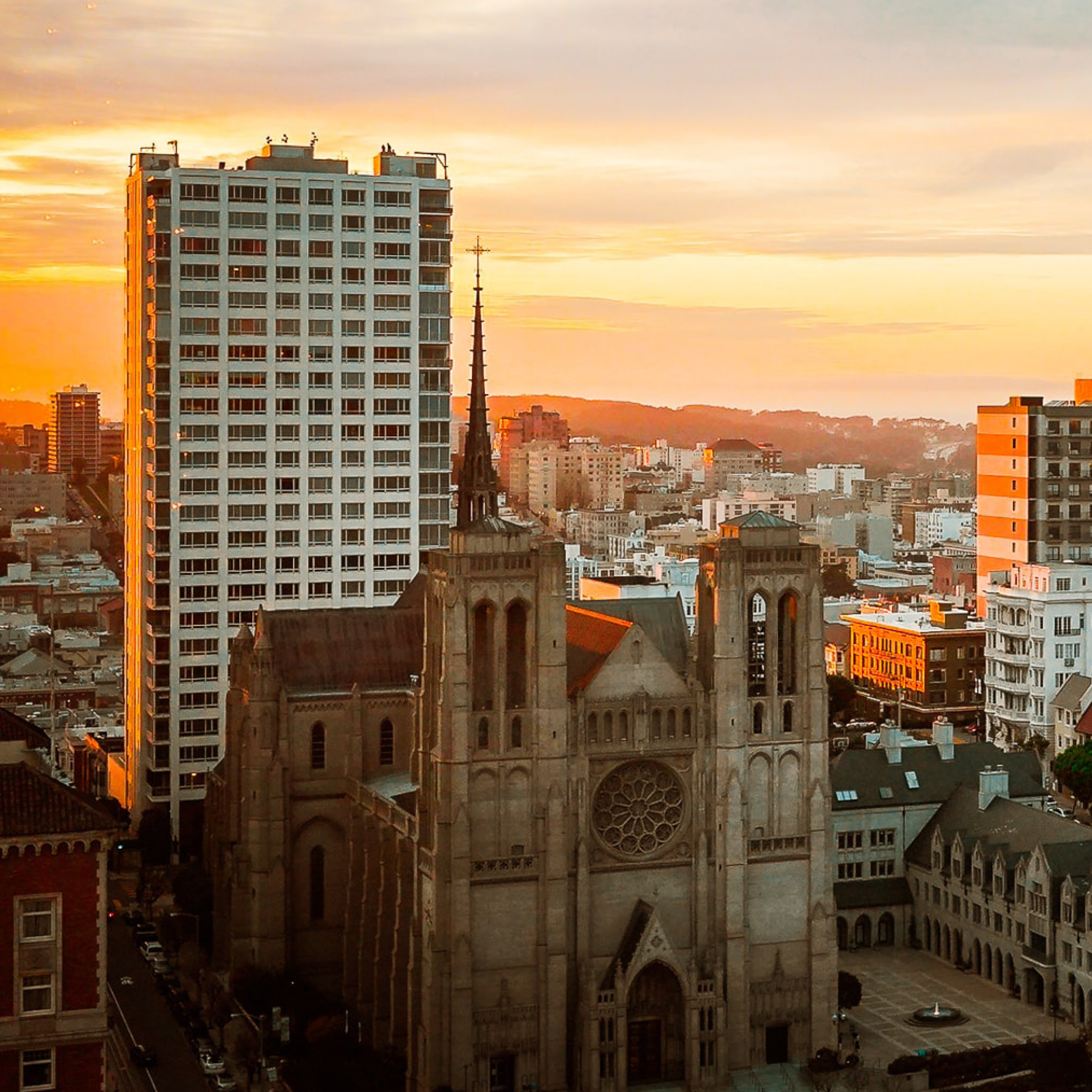When Peter challenged Jesus about his announcement of the necessity of his forthcoming death, Jesus rebuked Peter with these words, “The way you think is man’s way not God’s way”. There is always a temptation to reduce God and God’s purposes to the limits of our human way of thinking.

This can be true of our understanding of the Church. It is easy to view the Church as a human institution determined by its human actors. We hear it claimed these days that the institutional structures of the Church as we know them today were a product of Roman governance structures embraced after the conversion of the emperor Constantine. It is claimed that the character of the original Christian community of apostolic times was lost under the acceptance of Roman patterns of governance.
These claims argue that the Catholic Church of today is a human construction and not faithful to the intentions of Jesus.
Let us consider this.
The Gospels reveal that the Church was always in the mind of Jesus from the beginning of his public ministry.
From the very outset Jesus was planning the establishment of his Church as the means by which his work of redemption would be continued.
Thus, we note that, while attracting many followers, Jesus deliberately began selecting some in particular. He specifically called Peter, Andrew, James and John. These chosen disciples were his close companions and he began to disciple them more intensively. On many occasions following his teaching of the crowds, Jesus would take his chosen ones aside for special instruction.
Jesus then selected the Twelve, mirroring the twelve tribes of Israel. They were to be the foundation of the New Israel, the Church.
Further on Jesus appointed one of the Twelve, Peter, as their head. He did this despite Peter’s obvious limitations. The Church, in the end, would rely on divine guidance and not solely on the capacities of its leaders.
At the moment of naming Peter as leader of the Twelve, Jesus announced in clear terms that the Church was to be established to continue his mission in the world. However, he gave them no blueprint, no org chart. He trusted them to develop things as they saw fit. He had full confidence in them. However, there was to be one essential ingredient to assist them in fashioning the nature and role of the Church. This was the Holy Spirit.
At Pentecost the Apostles received the grace of the Holy Spirit required for them to carry out the work of the Church.
Immediately upon receiving the outpouring of the Holy Spirit, Peter proclaimed the Christian Gospel.
The sacramental nature of the Church was inaugurated as he unhesitatingly instructed those who came to faith to be baptised. The Apostles were established in their two essential roles – preaching the risen Christ and sanctifying by means of the sacraments.
The structures of the Church evolved as time went on. By the early second century Ignatius of Antioch described the now settled order of Church ministry and governance: bishop, presbyter (priest) and deacon.
The Church developed its structures of ministry in response to the developing circumstances. Just as each person goes through stages of growth from a baby, to a child, to an adult and so to old age, while the outward features change, the person remains the same. So too with the Church. Now it is a vast and complex entity but it remains the same Church that began at Pentecost.
What was also clearly in evidence was that those entrusted with pastoral governance in the Church – the bishops – had the first duty of ensuring the faithful transmission of the apostolic faith.
Their first role was preaching and teaching. In the second century Irenaeus of Lyons described how fidelity to the truth of the faith was guaranteed by the office of bishop. The authentic teaching of the faith also ensured the unity of the Church. The apostolic succession of bishops guarantees a link through time with the apostolic faith and, at the same time, it is a guarantee of unity across the Church.
They were also the key dispensers of the sacraments. Bishops presided over the baptism and confirmation of converts each Easter. Bishops were seen as the ones to confer the gift of the Holy Spirit in the Sacrament of Confirmation. The gift of the Holy Spirit given to the Apostles at Pentecost was now to be given in a particular way through their ministry.
Thus, the role of bishops in governance was grounded in their role of teaching and sanctifying. It was inseparable from their evangelising ministry. Their pastoral governance of the particular local church under their responsibility was, in fact, shaped and inspired from their preaching and sanctifying roles.
In the Church governance is not just management and administrative leadership but essentially pastoral and spiritual.
In the current discussion concerning the governance of the Church occasioned by the proposal of synodality, reflection on the divine plan for the Church is important. We cannot allow ourselves to depart from the divine plan.
When the question of structures of governance in the Church is opened up there is a temptation to compare the Church to the exercise of authority in contemporary society by means of participatory democracy.
It is right to emphasise the dignity of all the baptised and that all in the Church should be able to contribute to the life and mission of the Church. All members of the Church should contribute, but each within their own vocation. It is appropriate to speak of ‘co-responsibility’ as the way in which all work together.
What needs to be avoided is a clericalization of the lay faithful on the one hand and the effort to establish patterns of governance on corporate or democratic lines on the other.
Christ had a wise plan for the way in which his Church was to function. In the end the Holy Spirit is the key protagonist animating and guiding its functioning through leaders entrusted with a threefold responsibility to teach, sanctify and govern. Governance in the Church cannot be separated from the other two ‘munera’ (roles of priesthood).
To do this is to abandon the divine plan with its inherent divine wisdom. There is a divinely appointed structure of hierarchical governance for the Church which cannot be replaced by adopting more contemporary governance structures.
As the reflection proceeds prior to the second assembly of the Synod on Synodality to be held in October 2024 we must be fully conscious of and faithful to Christ’s plan for the Church. There is a divine plan and we should ensure that we do not seek to try and remake the Church to resemble human worldly structures. While we live in the world, we must resist becoming transformed by the world. Instead it is the Church which must transform the world, bringing all things under Christ.



Comments